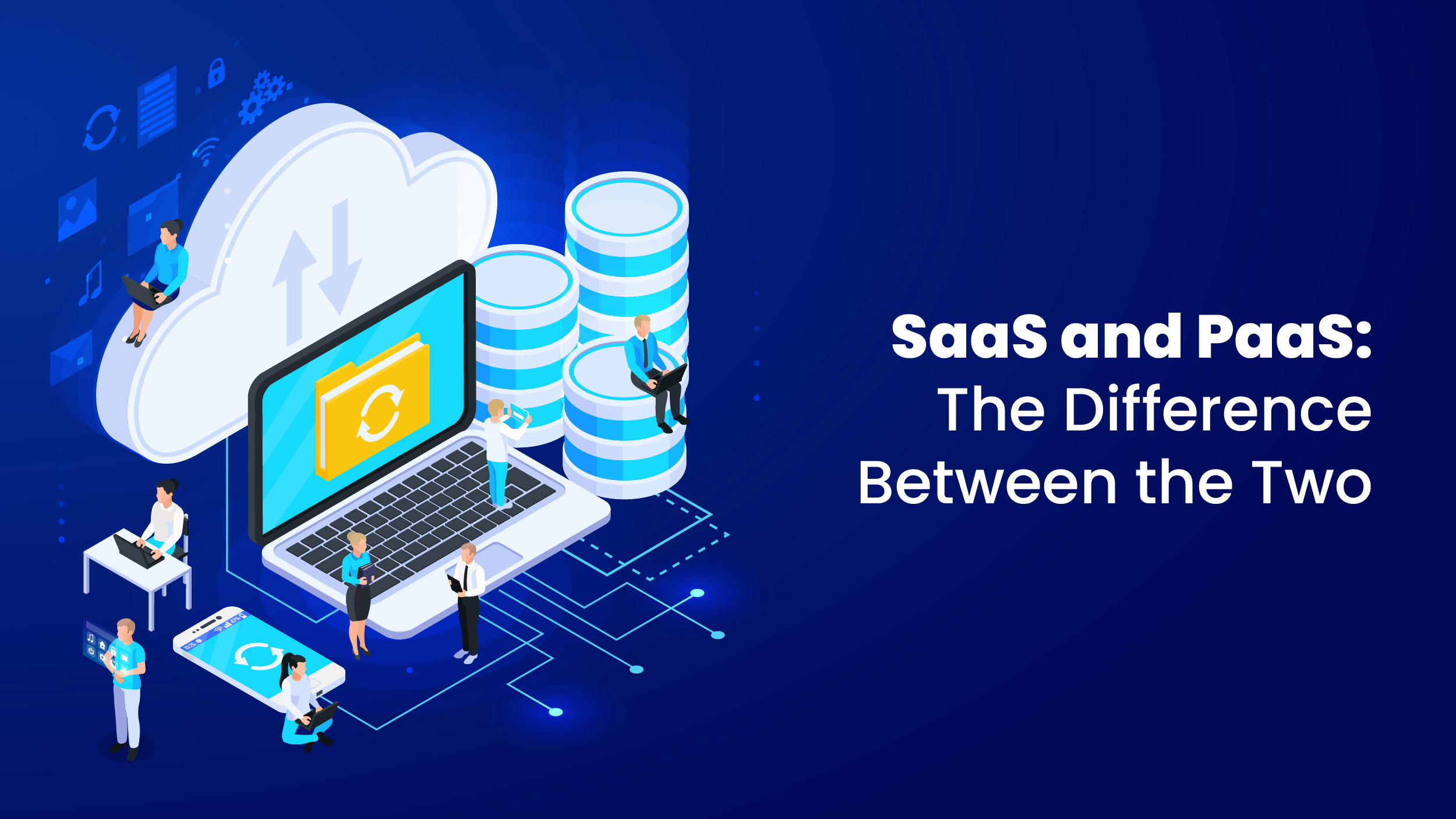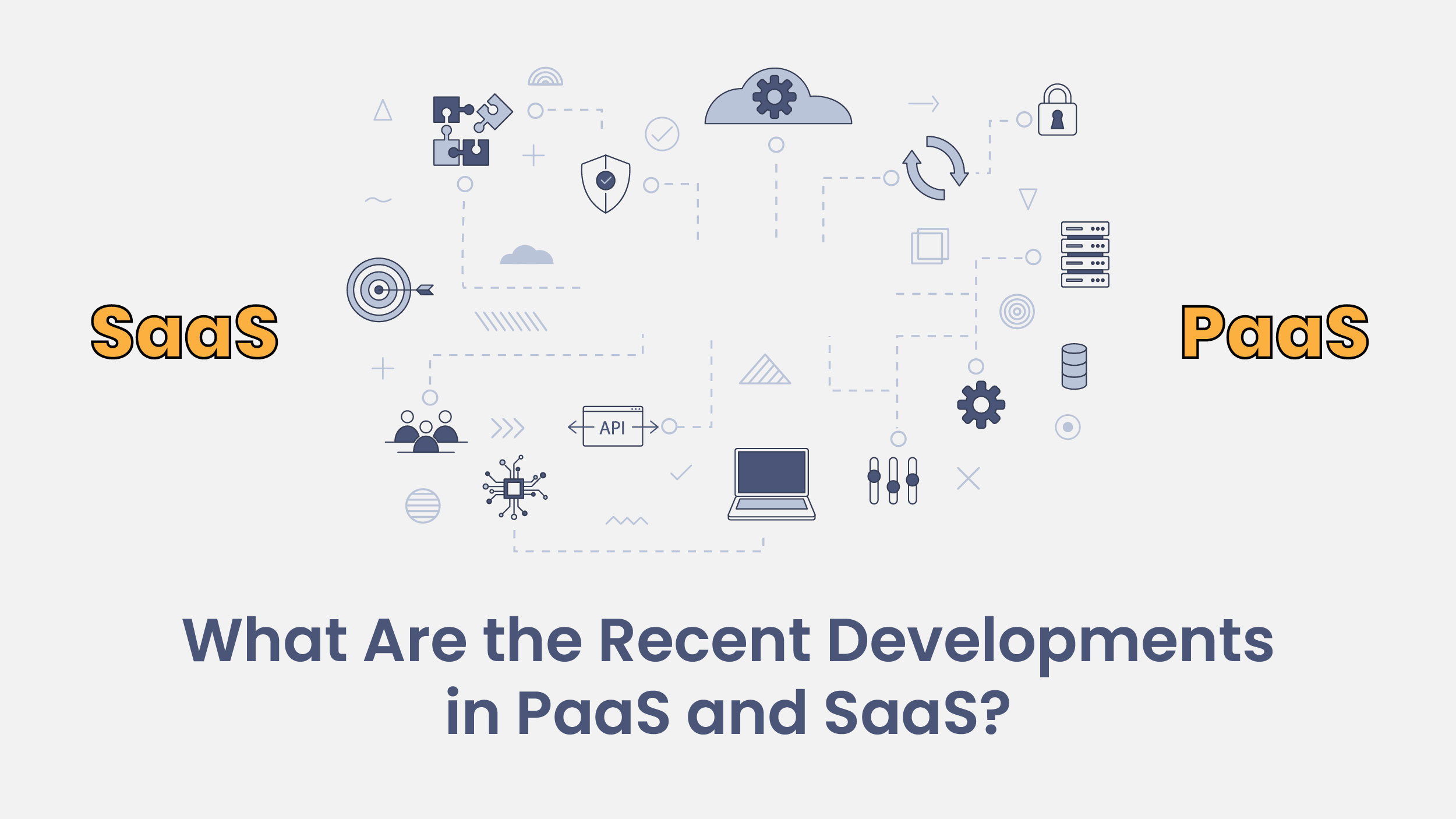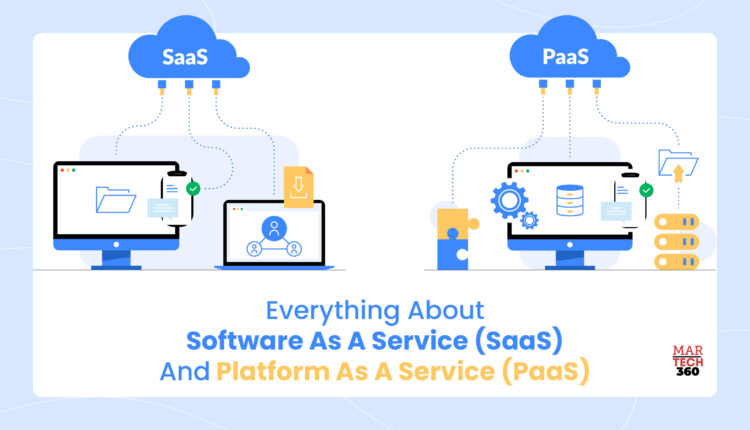Cloud computing has emerged as a transformational force in the ever-changing world of information technology, completely altering how organizations and people access and manage software applications and infrastructure. Software as a Service (SaaS) and Platform as a Service (PaaS) are two crucial aspects of this cloud computing revolution. These ground-breaking cloud-based methods have revolutionized how software is distributed, maintained, and scaled, giving users and organizations unrivaled flexibility and effectiveness.
Understanding the differences and advantages of cloud computing services is crucial when moving your company to the cloud for application or infrastructure deployment. Here is all the information you require regarding Platform as a Service (PaaS) and Software as a Service (SaaS).
SaaS and PaaS: The Difference Between the Two
 SaaS and PaaS are two of the major categories of cloud computing services provided by a third party. Additionally, there is also IaaS, which means Infrastructure as a Service. In IaaS, the same technologies are provided by a third party, but customers have to manage their applications, data, runtime, and so forth. Coming back to the differences between SaaS and PaaS, here is how the two are different from each other:
SaaS and PaaS are two of the major categories of cloud computing services provided by a third party. Additionally, there is also IaaS, which means Infrastructure as a Service. In IaaS, the same technologies are provided by a third party, but customers have to manage their applications, data, runtime, and so forth. Coming back to the differences between SaaS and PaaS, here is how the two are different from each other:
- SaaS (Software as a Service) is an all-inclusive form of cloud computing service. It can deliver an entire application managed by a SaaS vendor through a web browser. With the help of SaaS, everything, such as software updates, bug fixes, or even maintenance, is handled by the vendor. Customers can easily connect to the app via a dashboard or API without having to install anything. Some common examples of SaaS solutions are Hubspot, Slack, and Dropbox.
- PaaS: Businesses or developers can use PaaS to build, host, and deploy consumer-facing apps. PaaS providers (vendors) provide integrated solutions. They host the hardware and software on their infrastructure to deliver this platform to users. Simply put, this means that developers can build, run, and manage apps in a ready-made environment. However, businesses still need to manage their applications and data for customizability to provide the foundation for data protection, storage, etc. Some common and well-known examples of PaaS solutions are Google App Engine, Liferay Cloud, and OpenShift.
What Makes SaaS and PaaS Stand Out?
SaaS platforms are ideal for businesses when they want an application to run smoothly and reliably with minimal input. For example, let us consider an email server. We send and receive emails without any hassle and without having to worry about the email settings. However, one day things will go south, and you may not receive or be able to send emails.
This is where the importance of using a SaaS platform comes into play. If you run your email inbox on a SaaS platform, the chances of things going wrong with the email server are fairly low. Additionally, when things go wrong, you need not worry about the solution, as it is the responsibility of your SaaS provider to come up with one.
On the other hand, the app development process in Platform as a Service allows the developer to focus on the creative side of it.
Here, a developer doesn’t have to indulge in the routine tasks of managing software updates or security patches. Instead, they can spend all their time and attention creating, testing, and deploying the app. PaaS also has a proven record of being the most cost-effective and time-efficient way for developers to create unique applications.
Deploying solutions through the cloud is an inevitable part of our “online future”. So, opting for cloud computing services is the wisest decision to help your business grow. Regardless of what solution a business has chosen, whether it is SaaS, PaaS, or IaaS, the future is in the cloud.
What Are the Recent Developments in PaaS and SaaS?
 In the field of cloud computing, notable developments are happening every day. Below are some of the latest developments in SaaS and PaaS.
In the field of cloud computing, notable developments are happening every day. Below are some of the latest developments in SaaS and PaaS.
The Rise of AI-Powered SaaS and PaaS
SaaS and PaaS can benefit from the use of AI in a variety of ways to enhance their use, effectiveness, and performance. AI can be applied to SaaS for natural language processing, personalization, and predictive analytics. By doing so, the software may be better able to comprehend & foresee user needs and provide services that are more specialized and effective.
SaaS providers are beginning to include AI in their offerings as they become aware of its potential advantages. According to a Tech Jury poll, 42% of SaaS companies expect to adopt AI in the near future, and 35% of them are currently utilizing it.
Automation of many software development and deployment processes, including testing, debugging, and monitoring, is possible with PaaS. This can shorten the amount of time and money needed for development while also raising the overall standard of the finished product.
How Is the Surging Popularity of Low-Code and No-Code Affecting SaaS and PaaS?
The adoption of low-code and no-code platforms is significantly affecting SaaS and PaaS. With less reliance on conventional coding expertise, these platforms are enabling organizations to develop unique apps more quickly and effectively. SaaS and PaaS may become more popular as a result, as more companies will be able to develop their own unique solutions utilizing these low-code and no-code tools.
Additionally, the need for SaaS and PaaS solutions that are more adaptable and adjustable is spurring innovation in the low-code and no-code areas, where new platforms are always surfacing and developing. It is crucial to remember that while these tools could have advantages in terms of speed and usability, they might also trade off some functionality and customization.
Final Thoughts
SaaS and PaaS have transformed how companies use cloud computing services. SaaS offers enterprises the flexibility and scalability they need to concentrate on their core business activities through the offloading of infrastructure management and customizable apps. It is a multibillion-dollar industry, and even though it may not be growing as quickly as other cloud services, it still has a lot to offer to companies of all kinds.
PaaS, on the other hand, gives developers a platform to effectively create, distribute, and manage applications. The PaaS market has also experienced significant growth and is anticipated to gain much traction in the coming years. PaaS equips developers to concentrate on developing novel solutions without getting weighed down by infrastructure-related issues by offering a complete development environment.
SaaS and PaaS will undoubtedly play an ever more crucial role in determining the future of corporate operations and software development as technology develops. They are expected to spur innovation, boost productivity, and propel success for businesses throughout the world as a result of the ongoing digital transformation and growing reliance on cloud-based solutions.


Comments are closed.